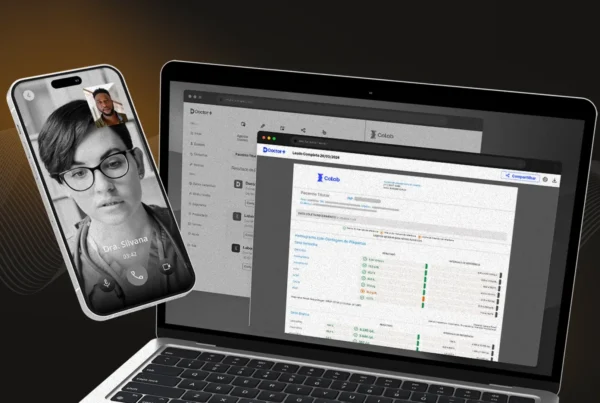No matter how good your internal team is, there is always a range of knowledge that external partners can introduce. The most exciting thing is that this exchange can be done with the intention of a legacy of productivity and modernization in the contracting company.
In this article we will focus on high-performance work and adapt to the core activities of the contracting company. We will talk more about benefits, iapplication steps, and the advantages of the BRQ team. Good reading!
What is Outsourcing?
Outsourcing is the practice of hiring external professionals to improve routine processes, increase productivity and assimilate new technologies and work methods.
Thus, a contracting company delegates function to another company or specialized team. In this way, it has access to modern methods, advanced technologies, and the expertise of professionals; who can exchange ideas, teach some methodologies, and share skills with internal collaborators.
Outsourcing technology is one of the best known, as a company that wants to change its mindset and immerse itself in digital transformation, for example, greatly benefits from contact with a specialized team from outside — but that adapts perfectly to routines and the preferences of the organization.
What is it for?
Outsourcing is an alternative for entrepreneurs to add technical knowledge to their businesses. In the case of technology, the contractor can hire a team to help implement a digital solution that has to do with the core activities of the organization, for example.
Thus, the internal team learns in practice to modernize the company’s practices. Likewise, external partners can be hired to perform a specific function, while internal employees focus on other productive activities.
Outsourcing is also quite viable for companies that need to access modern technologies and resources at a time when finances do not guarantee the acquisition of a digital solution, but are enough to pay for partners who master this technology and can help the contractor.
What are the advantages and disadvantages?
One of the great benefits is that Outsourcing is a strategic partnership model in which the objective is to bring structural and lasting benefits to the company that hires the service.
The term Outsourcing is used when another company is hired to carry out actions that have a closer relationship with the products and services that the customer delivers. Thus, the contractor now has professionals with a higher level of technical knowledge. Other advantages are:
- Focus on activities: with external partners, internal employees will be able to focus on activities that generate value for the customer, that is, on the production of goods and customer service;
- Better performance: the addition of highly qualified professionals will lead to increased productivity;
- Learning: the exchange of ideas between partners and the internal team tends to result in the modernization of the company;
- Flexibility: the Outsourcing team can adapt to the contractor’s schedule and routines;
- Optimized budget: Outsourcing is flexible and results in less fixed costs and more variable costs, which allows for a more rational allocation;
- Fewer labor risks: legal risks are assumed by the Outsourcing service provider.
The disadvantages, on the other hand, result from a wrong choice of partners and the lack of transparency in the definition of contracts, which can lead the contracting party to have less control over the activities of Outsourcing professionals.
Another risk is becoming too dependent on partners, which would cause productivity to drop by the time the partnership contract ends. Therefore, it is important to work on a model in which the external team works together with the internal squads, as we will show later in the text.
What are the types of Outsourcing?
In the technology world, we have three different Outsourcing models. Let’s meet them.
Offshore
Offshore occurs when the contractor seeks resources, services, and digital solutions from companies that operate outside the country. An example: is an American company that hires technology professionals based in India.
While she can count on a high level of expertise on the part of these people, issues such as time zones and differences in currency values can make this partnership difficult.
The offshore model has become possible due to technologies such as the cloud, which bring companies from different parts of the world closer together. It can be also sought by contractors who are looking for a service or specialization that is not yet well-established in their country.
Nearshore
It is a model similar to the offshore one, but the contracting party prioritizes partners located in neighboring countries. An example of the advantage of this model: many cities in Brazil and Argentina have the same time zone. So it’s easier for meetings and general communication. In addition, it is easier to schedule visits, an aspect that differentiates this model from the offshore one.
Onshore
Onshore is the option in which the partnership is made with companies from the contractor’s own country. In that case, it’s much easier to have a routine of visits to the workplace.
A possible disadvantage is prioritizing this ease of movement, but with a lower level of work compared to the other two models.
One advantage that nearshore and onshore share is that the physical proximity between contractor and provider makes it possible for contracted professionals to become familiar with the applicant’s organizational culture, as visits and online contact are facilitated.
How to apply them?
The first step towards Outsourcing is to understand the motivation and the service your company wants to hire. The second step is planning, identifying the ideal profile of the external professionals you want to have and what specific functions they will perform.
The third step is the research to find qualified partners, while the fourth phase is the selection and signing of the contract. The fifth stage is the integration of these professionals into the contracting company’s environment.
The sixth stage is the measurement, in which the service provided by the Outsourcing team is evaluated. The seventh and final stage consists of adjustments, in which managers resolve difficulties and ensure that the promoted service is always aligned with the needs of the contracting party.
It is necessary to understand that Outsourcing is a strategic service that will cause deep changes in the organization. Therefore, do not sign a contract with the first team that becomes available: check their references, their experiences, and testimonials from other clients.
What are BRQ’s differentials compared to traditional Outsourcing?
BRQ provides high-performance teams specialized in technology. Our professionals are qualified for both the development and implementation of strategies and tools that will transform digital solutions into effective results.
The partnership with BRQ, in terms of Outsourcing, can occur in two ways:
- Allocation: in this case, the client manages the processes and BRQ provides the professionals;
- Squads: here, BRQ manages and organizes processes, up to delivery. The client enjoys the result of this work.
But how does BRQ differ from traditional Outsourcing? What are its strengths? Let’s highlight what the company offers and what sets it apart from other organizations:
- BRQ’s engagement with the success of the contracted delivery;
- Metrics and data that feed continuous operational improvement (PDCA) cycles. Squads are constantly evolving;
- Use of practices based on Lean/Agile governance;
- Monitoring of KPIs, which ensures continuous deliveries of value to the contracting party;
- Operational and tactical management tools (through Team Care BRQ and augmented reality technology;
- Squad composition flexibility, which allows the aggregation of specialty profiles on demand (in the model known as on the fly);
- BRQ software engineering, which includes the use of reference architectures, and accelerators, among other solutions;
- Extension of all CoE BRQ specialties.
In this way, the contracting company will have more efficiency in its processes and cost reduction. In addition, according to what we have said so far about the exchange of ideas, the internal team also gains data intelligence and productive dynamism.
BRQ’s squads are made up of professionals trained in an Agile culture capable of working on several fronts. Over time, this innovation mindset spills over to the internal team, an achievement that occurs naturally due to the interaction between the two groups.
Therefore, in addition to meeting the objectives established in the contract, BRQ squads also leave a legacy of productivity, agility, and intelligence in the use of data. As we saw in the article, betting on Outsourcing is a process that has many more advantages than disadvantages, as long as the contracting company chooses high-level partners that are a reference in the market.
Want to learn more about? Contact BRQ right now.





